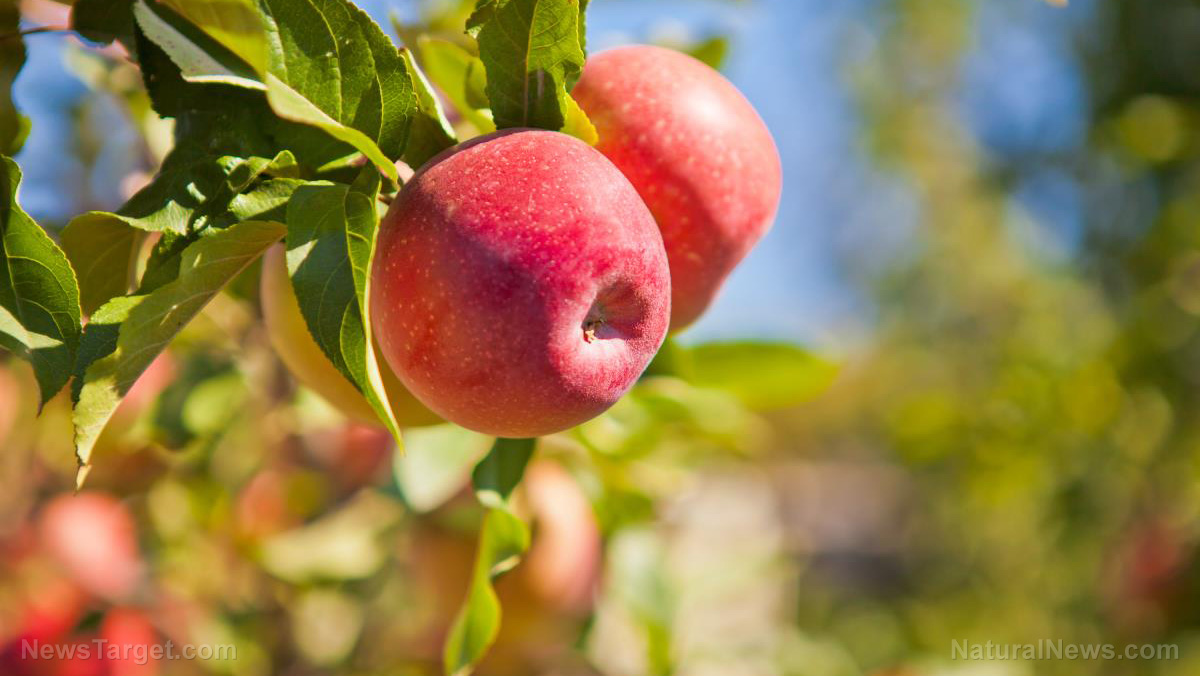Dodine — toxicity, side effects, diseases and environmental impacts
11/23/2017 / By Zoey Sky

Dodine is a fungicide and bactericide used to control scab on fruits like apples, brown rot on peaches, and several foliar diseases on fruits such as cherries. It is also used as an industrial biocide and preservative.
The compound dodine changes the cell walls of the fungus, causing loss of the materials from within the cell. Dodine is available as a soluble concentrate or a wettable powder.
Dodine is also commonly known as dodine acetate. The compound’s trade names include AC 5223, Apadodine, Carpene, Curitan, Cyprex, Efuzin, Melprex, Sulgen, Syllit, Tebulan, Vandodine, and Venturol.
Dodine is a General Use Pesticide (GUP), and it is registered for use only in western states for peaches, pears, and cherries. Classified as toxicity class I – highly toxic, products containing dodine bear the Signal Word DANGER because it can cause severe eye irritation.
Dodine’s chemical class is a substituted acetate, and it is available as a soluble concentrate or a wettable powder. Dodine appears as a colorless to yellow fine waxy powder.

List of known side effects
Dodine is slightly toxic to mice and rats when given orally. The clinical signs in rats included abnormal defecation, various discolored areas due to discharge or excretion, hypoactivity, prolapsed penis, and impaired muscle coordination.
On necropsy, distension of the stomach and/or intestines and abnormal abdominal adhesions were observed. While dodine was not toxic to rats or rabbits when applied dermally, it was severely toxic when inhaled by rats. The clinical signs included exaggerated breathing, immobility, lethargy, unsteady gait, cold to touch, and piloerection.
Dodine was extremely irritating to the eyes and slightly irritating to the skin of rabbits in one study and severely irritating in another study. It was not a skin sensitizer in guinea-pigs.
Body systems affected by dodine
Dodine is harmful if swallowed and can cause skin irritation. It can also cause serious eye damage. It is fatal to the respiratory system if inhaled, and dodine can cause damage to the organs through prolonged or repeated exposure. Dodine can also irritate the gastrointestinal tract.
Items that can contain dodine
Dodine is used to control scab, leaf spot, and other foliar diseases. It is also an effective algal growth inhibitor when used in non-agricultural applications.
The fungicide is used to control pests like scab, leaf spot, brown rot, blossom rot, fusarium wilt, and downey mildew. Dodine is applied to fruit trees including apples, pears, peaches, cherries, plants like strawberries, nuts like black walnuts and pecans, trees like sycamore, vegetables like onions, and ornamentals like roses.
How to avoid dodine
When handling dodine, wear protective equipment and clothing such as a positive pressure self-contained breathing apparatus (SCBA). Take note that structural firefighters’ protective clothing will only provide limited protection.
Do not attempt to touch or walk through spilled dodine. Stop a dodine leak if you can do it without risk. Prevent dust clouds, and avoid inhalation of asbestos dust.
For small, dry spills, use a clean shovel and place the dodine into a clean, dry container and cover loosely. Move containers from the spill area. For small spills, pick up with sand or other non-combustible absorbent material and place into containers for later disposal. For large spills, dike far ahead of a liquid spill for later disposal. Cover powder spill with plastic sheet or tarp to minimize spreading.
Where to learn more
Summary
Dodine is a fungicide and bactericide that is used to control scab on apples, brown rot on peaches, and several foliar diseases on cherries.
Dodine is a colorless to yellow fine waxy powder, and it can come in liquid form.
Dodine is harmful if swallowed and can cause skin irritation. It can also cause serious eye damage, and it is fatal to the respiratory system if inhaled.
Sources include:
Tagged Under: dodine



















